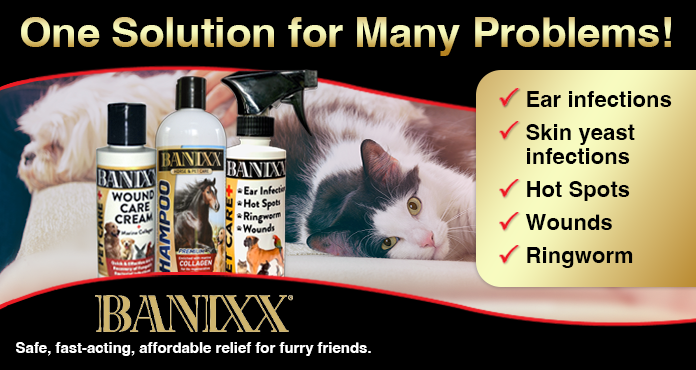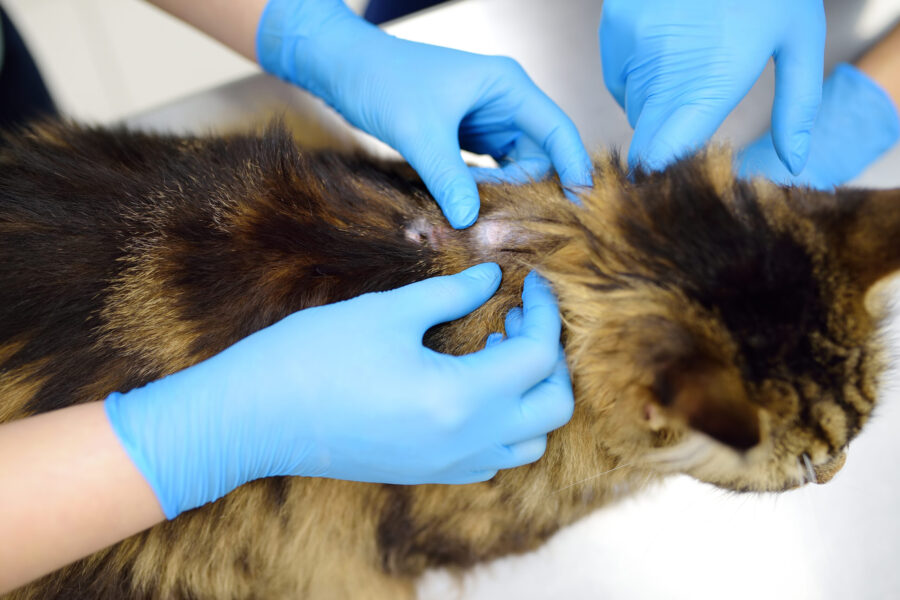[ad_1]
Ringworm is a common infection cat parents must deal with. Luckily, there are steps you can take to protect yourself, your cat, and other family members. Here are the top six things to know about ringworm infections and how to deal with them.
If you’re a cat parent and aren’t familiar with ringworm, consider yourself lucky! Ringworm is a common fungal infection that impacts cats. The name comes from the characteristic ring-shaped rash it causes, rather than a type of worm. In fact, this infection has nothing to do with worms at all! Ringworm infections are caused by fungi called dermatophytes, which are extremely common, so infections can happen easily. Whether you’re a seasoned veteran or facing your first infection, these six tips will help you control and treat ringworm in cats!
1. Any Cat Can Get Ringworm
You often see ringworm infections in cats with weaker immune systems, such as kittens, seniors, and unhealthy feral cats. What’s more, long-haired cats get ringworm more often because it’s more difficult for them to groom themselves. However, any cat can get this infection.
2. It’s Highly Infectious
Ringworm isn’t usually a serious infection and is easily treatable, but it’s very infectious. You or your cat can get ringworm from coming into contact with an infected animal, person, bedding, or other objects.
3. You Shouldn’t Pet a Cat with Ringworm (Because You Can Get It)
Many species of ringworm are zoonotic, meaning you can get it from touching an infected cat (or vice versa). If you do need to handle a cat with ringworm, protect yourself by:
- Covering any cuts or scrapes you have
- Wearing gloves, long sleeves, and an apron
- Washing your hands and clothes after handling the cat
4. Quarantine a Cat with a Ringworm Infection
Because ringworm is so contagious, it’s important to quarantine an infected cat to protect yourself and other two- and four-legged family members in the house. Isolation usually lasts between two and four weeks, though treatment typically lasts five to six weeks. Once your cat has started treatment, quarantine should continue until you get a negative result from a fungal culture that your veterinarian can take.
5. You Must Clean Everything in Your Cat’s Environment
Ringworm spores are invisible and persistent: You can’t see them with the naked eye, and they can lie dormant for years. As such, it’s important to wash everything you can and throw out/replace anything that can’t be washed. Here are some additional tips:
- Wipe surfaces with a pet-friendly disinfectant (this does NOT include Lysol)
- Steam clean or shampoo carpets and furniture
- Wash food and water bowls with disinfectant soap
- Vacuum and clean surfaces every couple of days
- Wash your cat’s bedding, towels, your clothes, and cleaning cloths twice with bleach
- Disinfect brushes and grooming tools
6. Start Treatment Immediately
Talk to your vet about whether your cat should be clipped or shaved. In terms of treatment, Banixx Pet Care and Banixx Medicated Shampoo are simple, affordable, and effective products that treat a ringworm infection. Safe for kittens, puppies, cats, dogs, and other animals, these gentle yet powerful products have anti-fungal properties that control and prevent the spread of ringworm while soothing itchy, painful skin.
Visit Banixx to learn more!

Animal Wellness is North America’s top natural health and lifestyle magazine for dogs and cats, with a readership of over one million every year. AW features articles by some of the most renowned experts in the pet industry, with topics ranging from diet and health related issues, to articles on training, fitness and emotional well being.
[ad_2]
Source link
